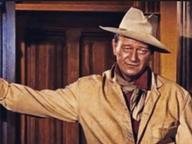Quiz Answer Key and Fun Facts
1. John's USC football coach
2. Supposedly, the inspiration behind John Wayne's walk and talk
3. Cast Wayne in his first big role/created his name
4. Character used to express a political view of Wayne's
5. John Wayne's second wife
6. Directed the film "Stagecoach" that made Wayne a star
7. Hosted John Wayne on her radio show
8. Beat Wayne to the 1949 Best Actor Oscar
9. Famously had an affair with John Wayne
10. Role that would win Wayne a Best Actor Oscar
Source: Author
pollucci19
This quiz was reviewed by FunTrivia editor
ponycargirl before going online.
Any errors found in FunTrivia content are routinely corrected through our feedback system.
